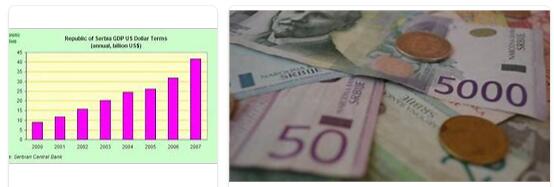Serbia is a parliamentary republic. The parliament is made up of 250 members, elected by universal suffrage, whose office lasts for 5 years. Kosovo, an autonomous province of Serbia, is occupied by international troops and has been under the administration of the United Nations (UNMIK) since 1999. Its assembly is made up of 120 members elected by direct suffrage, and a president elected by the assembly. The death penalty was abolished in 2002. In 2006 illiteracy affected 3.6% of the population. Visit jibin123 for study in Serbia.
ECONOMY
During the nineties of the twentieth century, the difficult transition from the planned economy to the free market and the trade embargo imposed by the West, caused a long crisis that resulted in a collapse of productivity and foreign trade, very high inflation and high unemployment, non-existent to times of communism. This crisis was accentuated with the 1999 war for Kosovo, in which Serbia was the main target of the NATO attacks that produced heavy damage to production facilities and communication infrastructures, eliminating the foreign trade of the republic that did not could no longer make use of the bridges over the Danube, destroyed by bombing. After the fall of the Milošević regime, the republic began an economic and financial recovery, which resulted in the first result of the end of inflation thanks to the close link established between the Yugoslav dinar and the German mark. In the following years, despite the progress made, the economic situation was still rather problematic. Indeed, Serbia’s agricultural and manufacturing production, faced with free international competition, given the fragility of its economic sectors, would have succumbed to the impact with foreign markets if not supported by the state with protective tariffs. This customs policy clashed until 2006 with the interests of Montenegro, which intended to buy the agricultural and industrial products it needed on the free international market, without having to accept the tariffs requested by Serbia for its goods. The economic dispute between the two republics also extended to the energy sector: in fact, while Montenegro imported petroleum products ready for consumption, Serbia limited itself to purchasing from abroad only crude oil, which was refined internally. After the separation from Montenegro, Serbia presents itself as a producing country, although it still has a protected economy. § In post-war Serbia there was a process of internal migration towards the countryside, in fact there were employment difficulties in the cities, due to the cutting of jobs in the public administration, the restructuring of companies to adapt them to international standards and the privatization of public companies. This phenomenon is particularly accentuated in Vojvodina, which, due to its fertile flat land, has seen the population dedicated to primary care increase from 4% in 1992 to almost 10% in 1999. Kosovo, on the other hand, has had a strong urbanization fueled by the new job opportunities offered by international organizations and Western NGOs operating in the area; in fact, in the region agricultural incomes for the residents are lower than those that can be obtained from remittances from Albanians abroad, from humanitarian aid provided by the West and from employment at military bases and private employers of foreign origin. § Serbia bases its economy mainly on agriculture (cereals, sugar beets, sunflowers, flax, hemp, potatoes, hops, tobacco, fruit); other resources are the breeding of livestock (cattle, sheep, pigs), the exploitation of the forest and the subsoil (lignite, copper, lead, chromium, zinc, silver, gold, iron ores, antimony) and industry (metallurgical, mechanics, textiles and chemistry). The main cities, in addition to the capital, are Niš, Kragujevac, Leskovac, Pancevo, in Serbia proper, Novi Sad, Subotica, Sombor, and Zrenjanin in Vojvodina, Priština and Péc in Kosovo.
